In 2019, Grady Cofer explained to us about the visual effects work of ILM on Us. He then worked on Space Jam: A New Legacy. He talks to us today about his return to the Star Wars universe with the third season of The Mandalorian.
What was your feeling to be back into this iconic universe?
This was my first season on the show. Richard Bluff was the production visual effects supervisor the first two seasons and did an amazing job. I feel quite lucky to have inherited this role on a show that does so many things right.
But though I am new to The Mandalorian, I am no stranger to Star Wars. I worked on Attack of the Clones and Revenge of the Sith for years in my early days at ILM. In fact, there are some environments this season that are direct callbacks to scenes I had contributed to in those prequels, like the Opera House on Coruscant.
To me, there’s really nothing like the Star Wars universe – its fantastic vistas and characters and grandness and depth. Like many in the VFX industry, Star Wars is the reason I do what I do. I saw that film as a child and knew I wanted a career in visual effects. So when I was asked to join the show, I jumped at the chance.
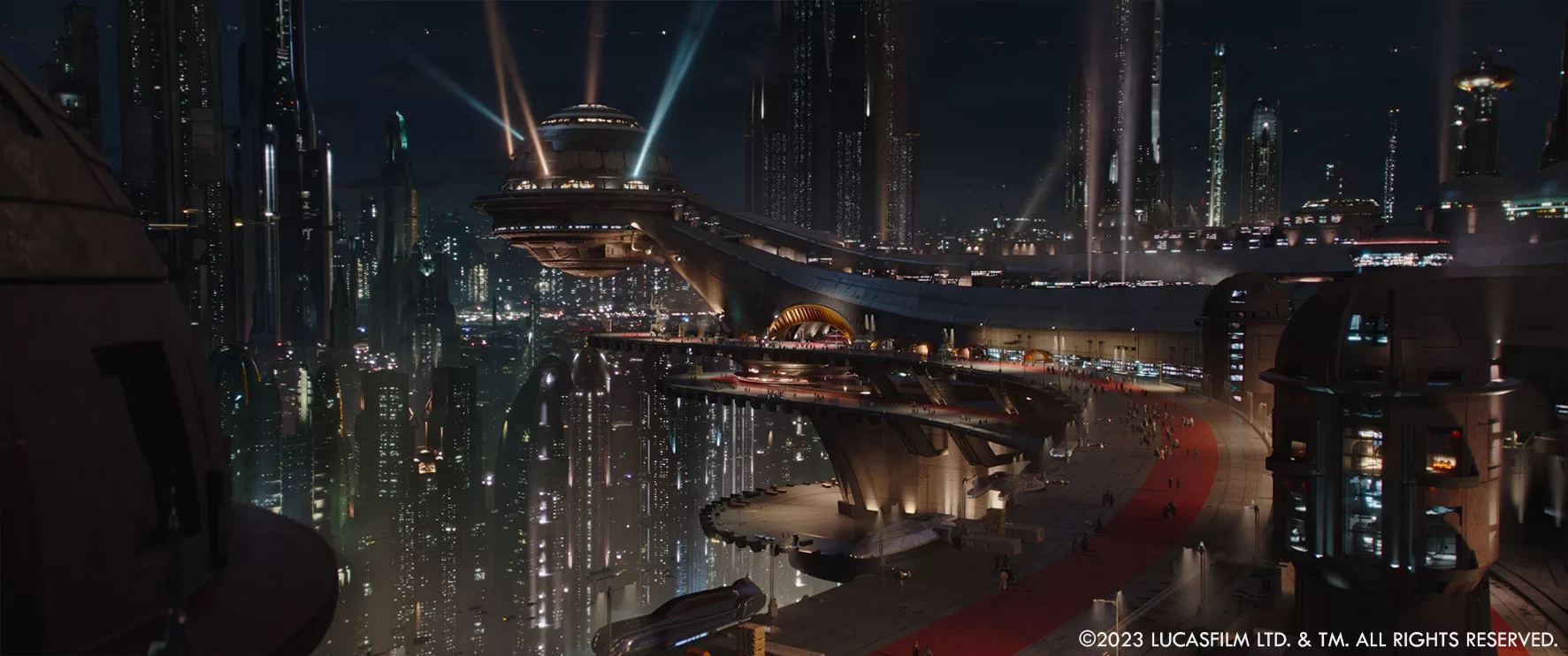
How was the collaboration with the showrunners and the directors?
Working with the creative team of Jon Favreau, Dave Filoni and Rick Fukuyama was a great experience. They have a crystal clear vision for the show. But they are also very receptive to your ideas and opinions. Often reviews felt more like being in a writer’s room, discussing character and tone.
Work is never shown in isolation. We would always watch shots in the context of the cut. And often the creative team was more interested in how well the new shots communicated an idea, or in how it would make the audience feel, versus the technical aspects of the shot.
That said, Jon has very high standards for visual effects and animation. He is a great partner in post, not only because he is a clever storyteller, and he keeps the work focused on supporting and enhancing that story experience, but also because he’s a bit of a fan of effects in general. He’s quite knowledgeable about various VFX techniques, and has great instincts about what works and what doesn’t.
Beyond collaborating with the showrunners, one of The Mandalorian’s many joys is the chance to work with a diverse slate of talented directors. Each of them comes with his or her own unique experience and aesthetic and point-of-view. I find working with creative artists, getting on their wavelength and helping them tell their stories, to be very rewarding.
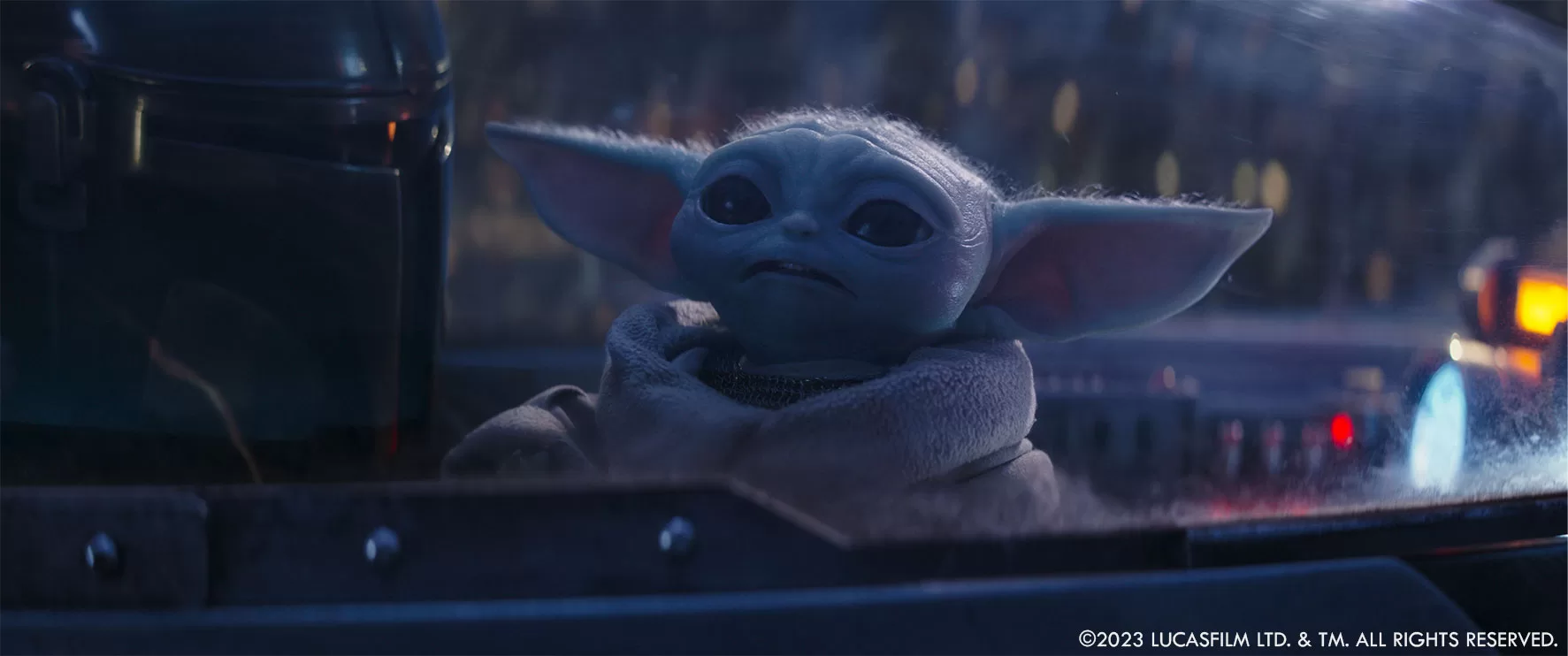
What are the main changes they wanted to make since the previous season?
Perhaps the biggest change was the overall scope. This season was epic. The themes that Jon was exploring – redemption, rebirth, the unification of the entire Mandalorian family to retake their homeworld – these were big ideas, big stories. And they demanded that the visuals and the world building be taken to a new level.
The challenge was to do exactly that, while staying true to what makes The Mandalorian so special – pushing the visuals to new levels, while keeping it grounded. This is really the key to the show: aim for the highest level of computer graphics and animation, but then balance that with more traditional techniques – like practical creature effects, animatronics, model miniatures – all of those old-school tricks that add a bit of analogue into our digital world, and help the visuals feel more lived-in and handcrafted.
It’s great to be on a show that values both: cutting-edge technologies, as well as honoring the great effects traditions of the past.
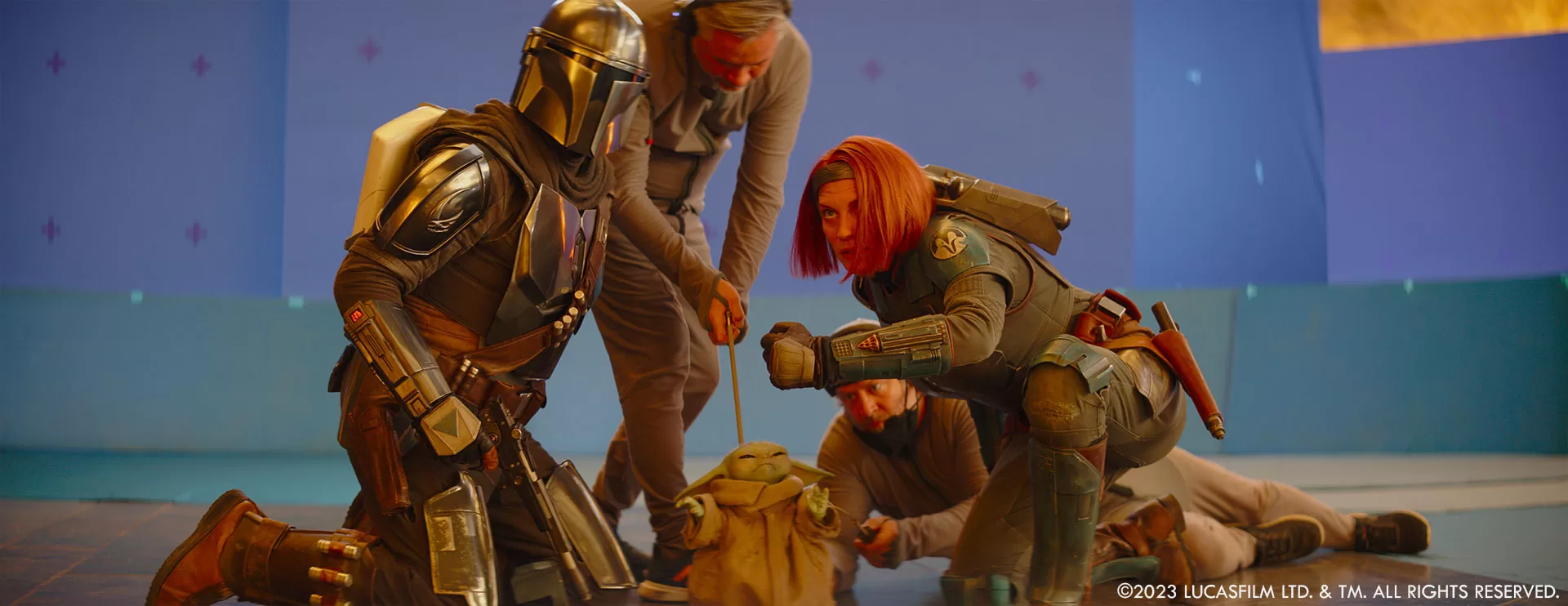
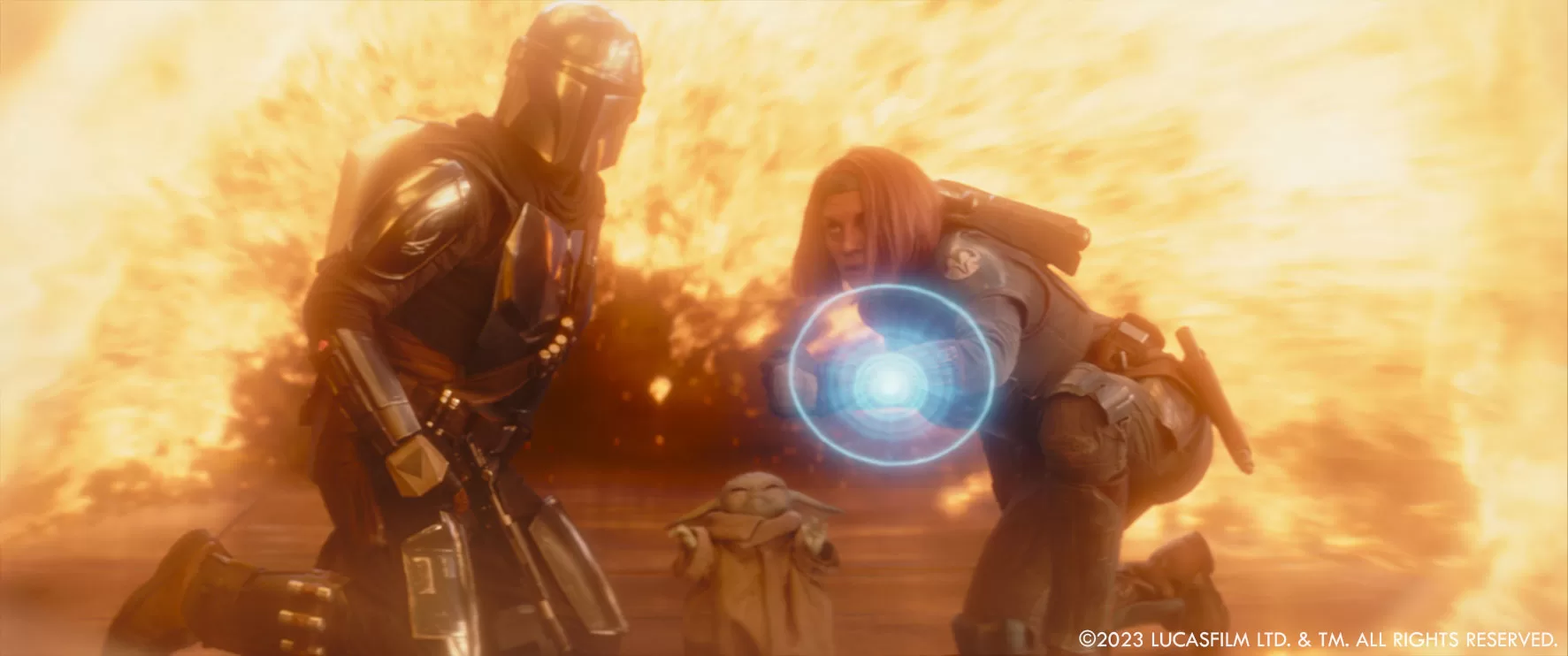
How did you choose the various vendors?
We are lucky on this show: we get to work with a group of incredibly talented VFX houses, many of whom have been on the show since Season One. In addition, of course, to Industrial Light & Magic (ILM) who has led the visual effects on Star Wars for nearly half-a-century, we brought on Image Engine, Hybride, Important Looking Pirates (ILP), Ghost VFX, and many others that consistently delivered outstanding work year after year. And I feel like this season they went above and beyond.
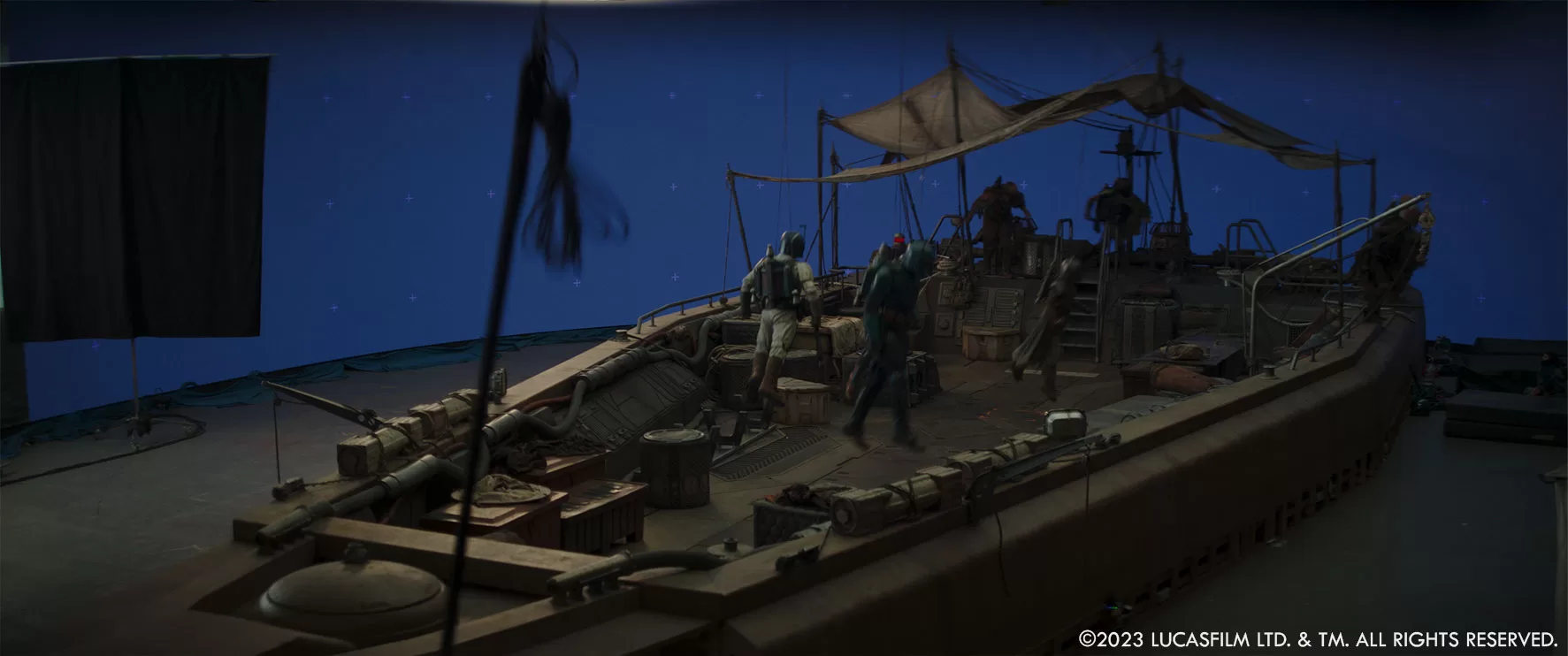
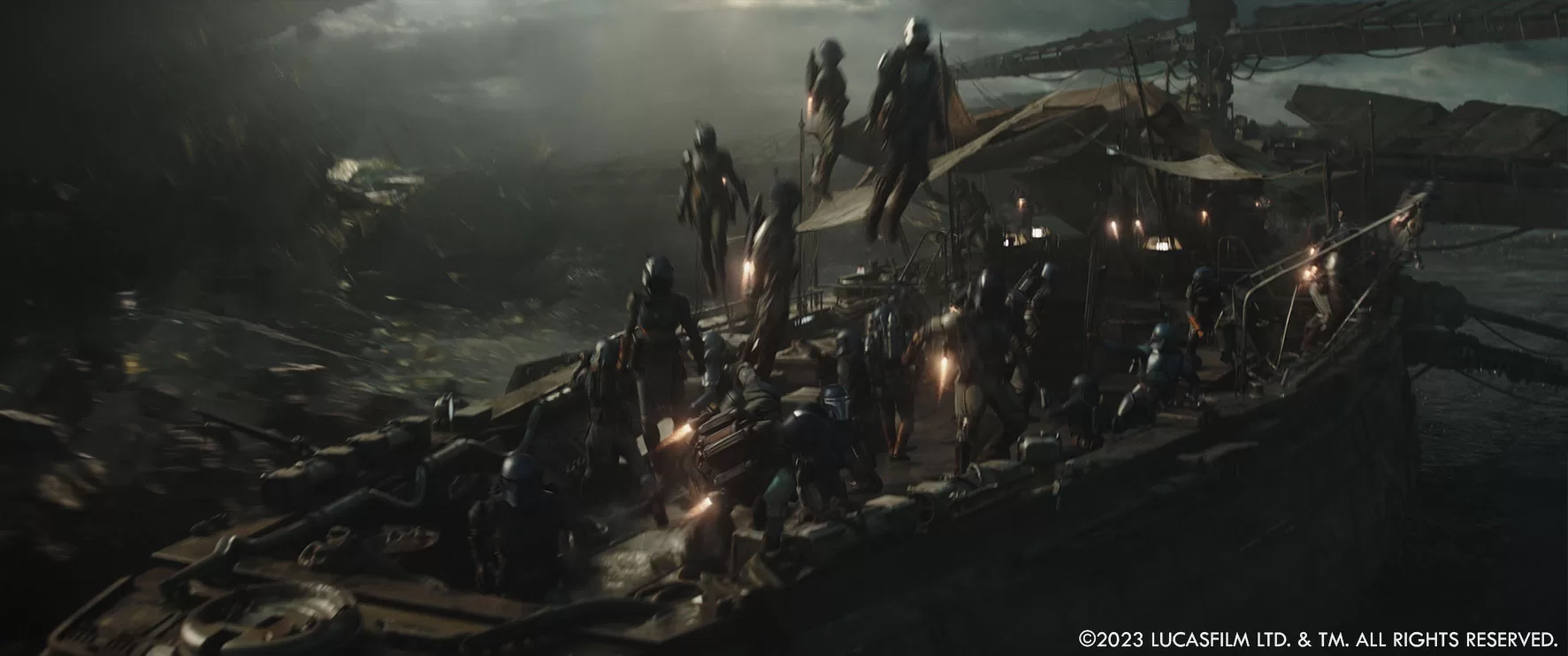
Where were the various sequences of the series filmed?
We used a number of locations to help create this season’s diverse array of environments. The planet where we first find the Mandalorians in Episode One was based on Lake Powell. And the journey to rescue the Mandalorian boy from the Giant Eagle traveled over areas of Moab, Utah. We captured plates and stills from various areas to help build the enviros in 3D. Then the lakeside action was shot on our backlot.
For the dogfight over Kalevala, Andrew Jones, our great Production Designer, went to the Isle of Skye early on to scout it, and came back with these beautiful images. We knew immediately that this was the perfect backdrop for our scene.
We pre-vized the action, using Skye as our environment. Then we carefully broke down every shot into flight paths and created a detailed shot list. And then our aerial unit followed these paths in a helicopter, when that was feasible, or with camera drones, when the paths were too risky.
Shooting at this beautiful location, and capturing real vistas, helped elevate the action, while grounding it in reality.
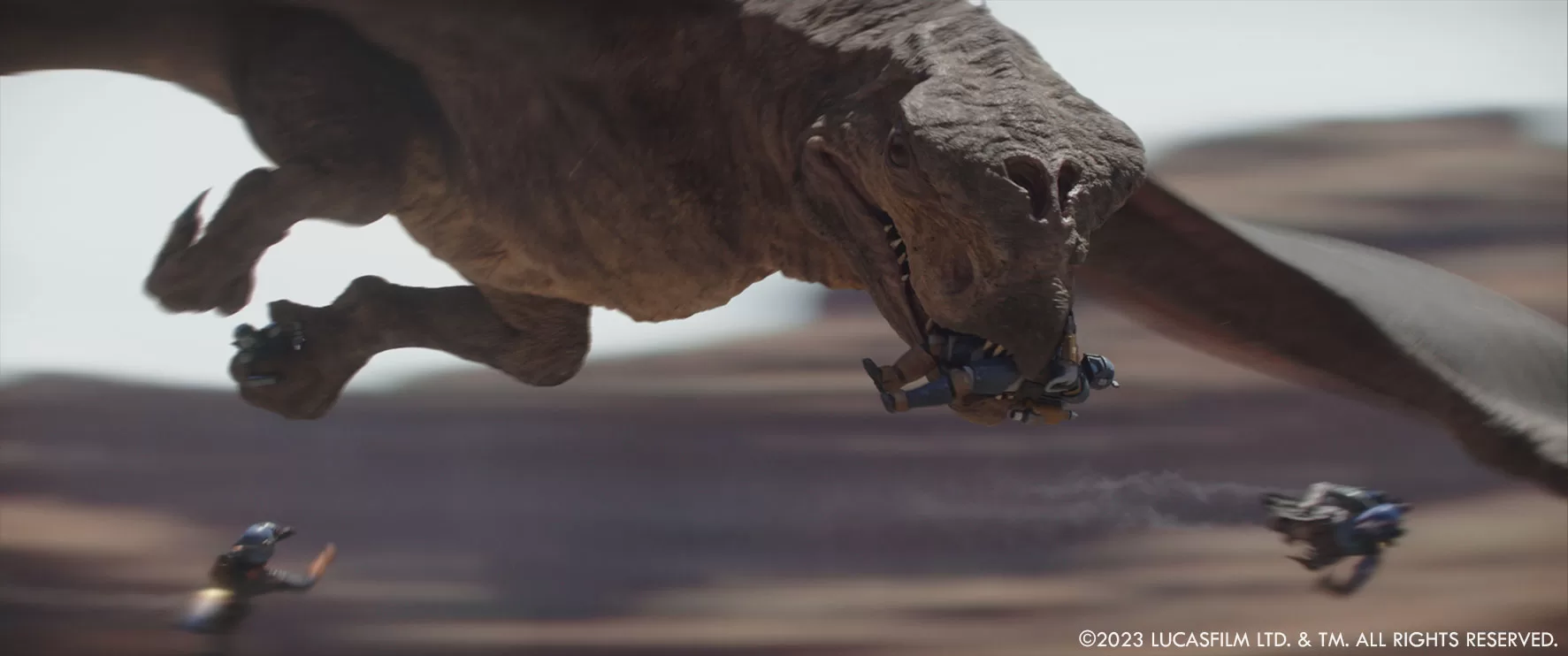
Can you elaborate about the design and creation of Mandalore?
Fans of Dave Filoni’s animated series will be familiar with Mandalore’s history. The inhabitants of the war-torn planet lived within these massive domed cities. And on the Night of a Thousand Tears, the Empire pummeled the planet with fusion bombs, obliterating the landscape.
This season was our first view of the aftermath. We knew that the audience was really anticipating it, and we just had to get everything right: the massive storm system that shrouds the planet, the trinitite-crusted landscape, the ruins of Sundari, the beskar mines, and the Living Waters. Every aspect of Din’s journey had to be carefully designed and executed.
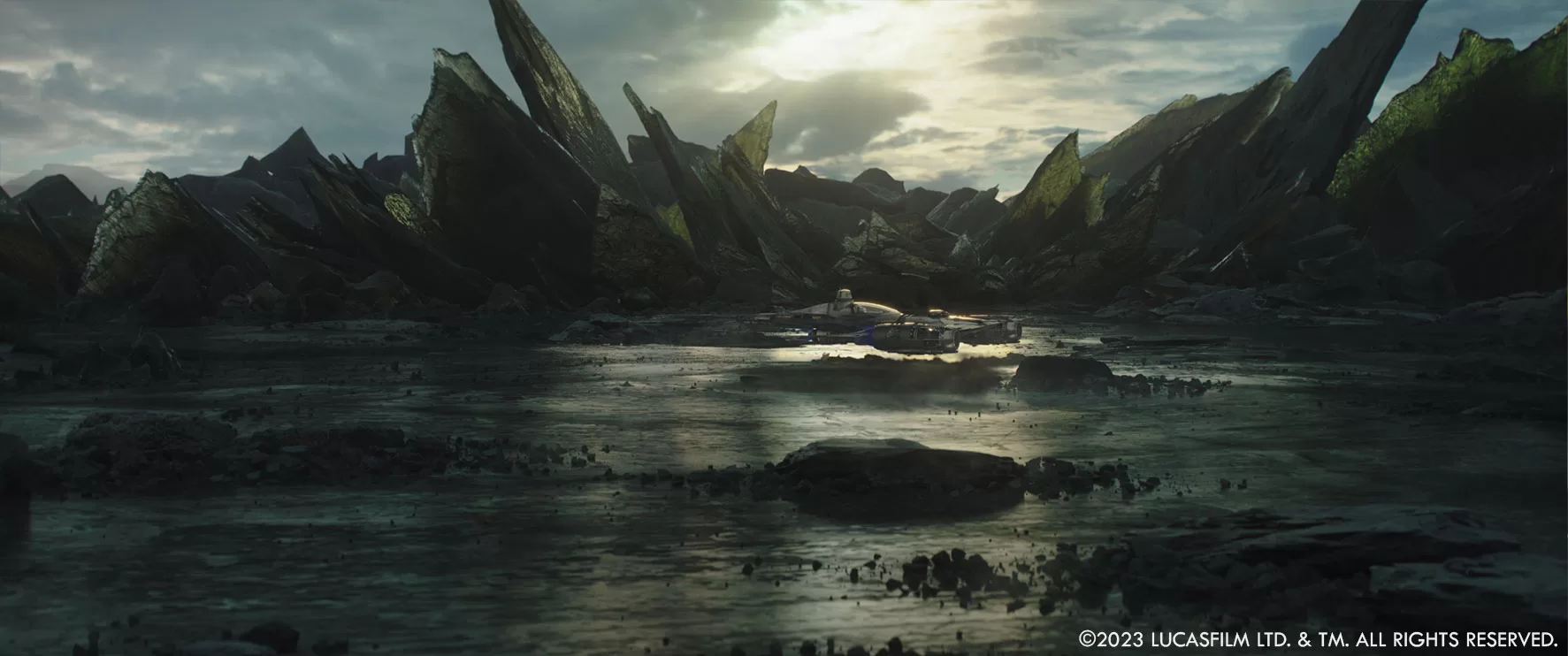
What kind of references and influences did you receive for this planet?
It all started with Doug Chiang’s team. They developed tons of inspiring concepts, exploring possible looks for the planet. The idea was that the superheated explosions had melted the sand into Trinitite – the greenish glass found around the Alamogordo nuclear bomb test site. Production even ordered a physical sample, which had to be held with special gloves due to its radioactivity.
It was such an important endeavor that both industrial Light & Magic and ILP began look-development in tandem. Complex materials were devised that incorporated veins of glass, granite, quartz and obsidian. The glass gave the surface a translucent quality, tinting the underground scenes green.
The cratered landscape was a combination of rigid simulations and detailed modeling. Finally, tangled building debris was scattered across the surface to give the planet scale.
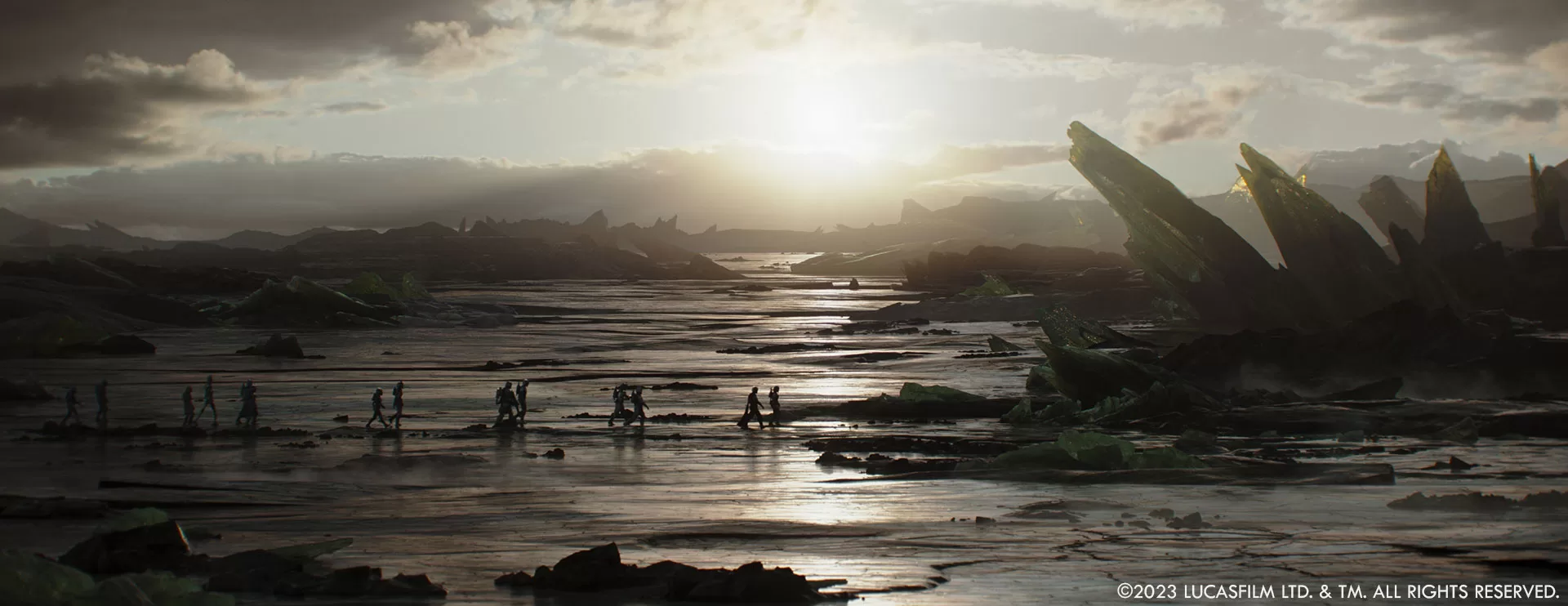
How did you create the impressive storm around the planet?
The idea was that the entire planet was blanketed by a toxic storm. We referenced satellite images and videos of hurricanes. Then we ran high-resolution simulations to create massive cyclones. All of the storm clouds and rain and interactive lightning were rendered volumetrically.

How did you handle the lighting and scale aspects for the underground sequences in Mandalore?
Many techniques were employed for the underground sequences. When Mando and Bo are jet packing down through the ruins, we shot them on wires, descending over bluescreen. Likewise, for the battle in the Great Forge, we build a large set on a soundstage. One of our amazing DPs, David Klein, and his team devised some beautiful lighting design that featured multiple shafts of light, all tinted green from the Trinitite above.
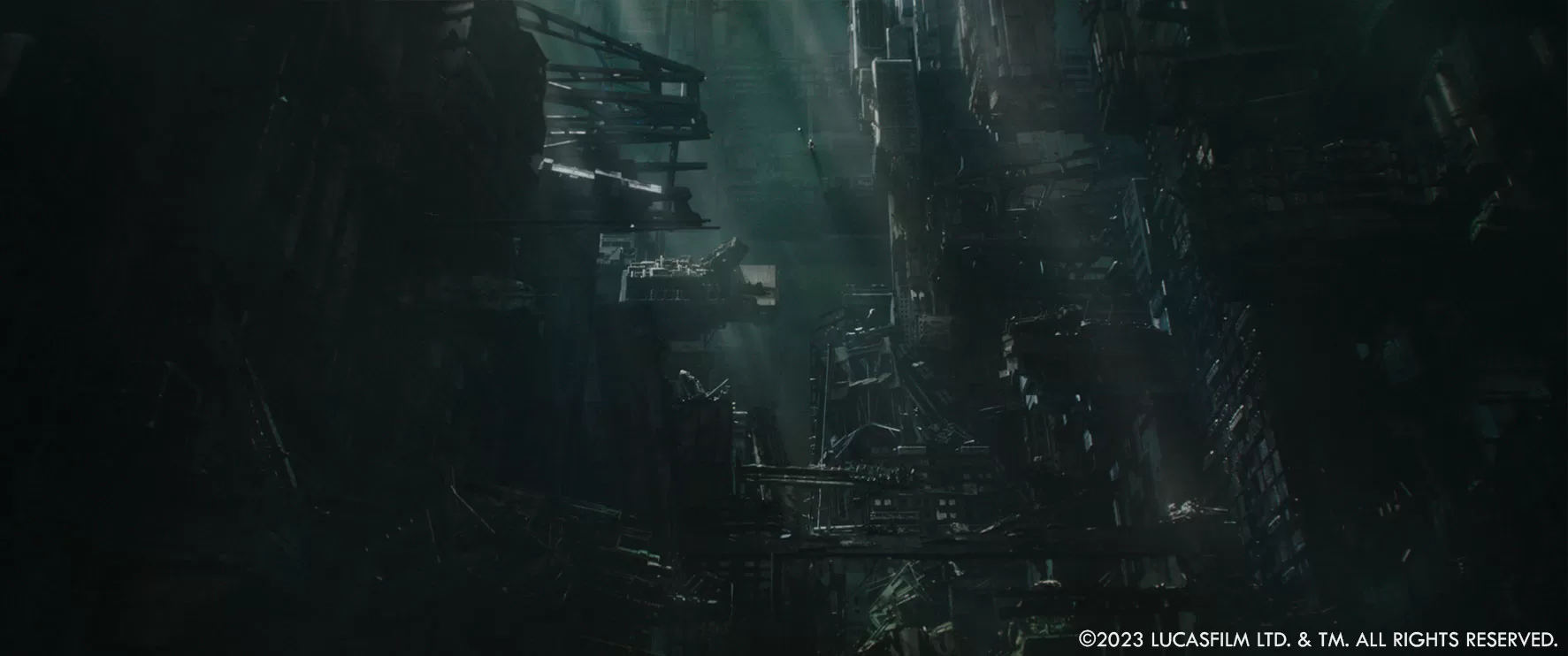
In order to capture the immense scale of the subterranean sewer tunnels, Andrew Jones’ VAD developed the environment in Unreal. We scouted the virtual location many times in VR to make sure that it was appropriately vast and nightmarish. And taking advantage of Unreal’s realtime lighting tools, we mimicked Klein’s practical lighting design. The scenes were then shot in the volume, with careful attention paid to seaming the foreground set to the imagery on the LED walls.
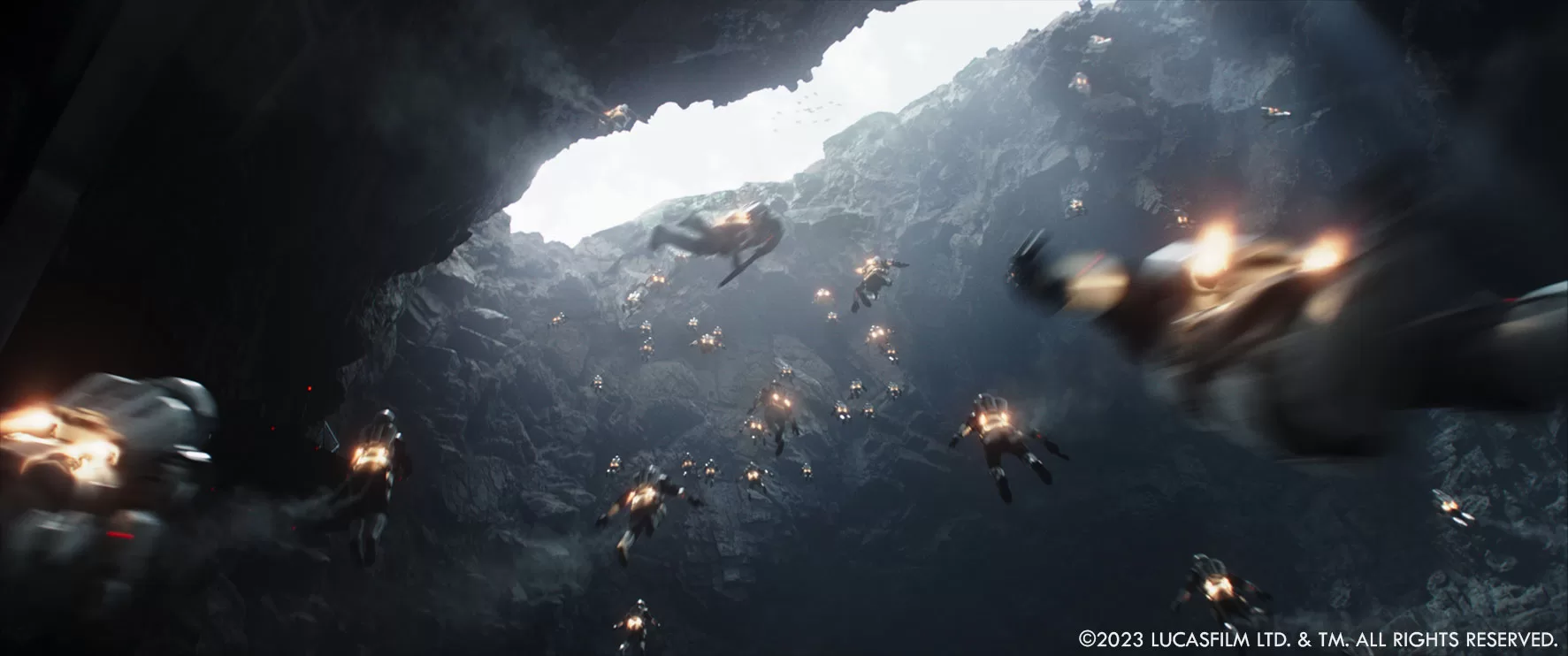
Can you tell us more about the use of ILM StageCraft?
We were very selective about which scenes would best take advantage of ILM’s StageCraft technology. We generally shot all cockpit work in the volume, especially now that Mando is flying in the N-1, with its glass canopy, and Mando in his shiny beskar armor. It’s pretty imperative that you capture that kind of work surrounded by real time imagery in order to get the right lighting and reflections.
The Imperial Launch Bay, which features as a backdrop to Mando and Bo’s final duel with Moff Gideon, was shot utilizing ILM StageCraft. That environment was so massive there was no way to build it on a stage. But the benefit of shooting that in the volume was that all of the virtual architecture and lights reflected into the scenic floors, and that kind of connection really helps it feel seamless.
But some of my favorite volume work this season was in Isaac Chung’s episode, which is the story about Pershing the scientist. That episode was very Hitchcockian – meticulously plotted, with every shot carefully planned out. And there were many sets that felt like very clever applications of the StageCraft technology.
Pershing’s office space is a great example. We had about six practical desk cubicles in the foreground, and the rest of them were rendered on the screens, populated with digital characters and droids. All of this was happening live, in Unreal. Beyond that, the airtrain terminal, the Amnesty courtyard, and the shipyard were all highly-detailed real time environments that really supported the story.
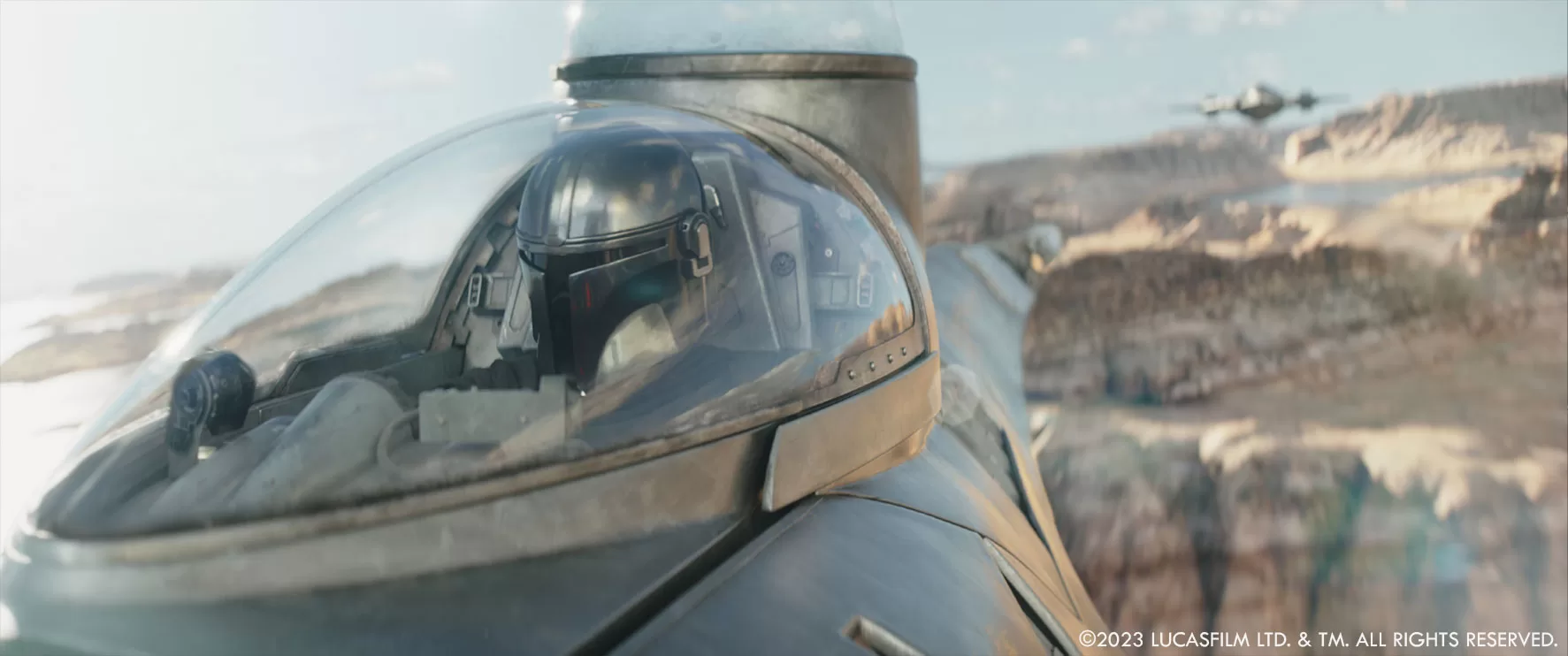
This new season is taking us in various environments. Which one was the most complicated to create?
This season featured eight planets and over one hundred unique environments. Mandalore was the centerpiece of the story, and for reasons described above, was certainly the most complicated.
But another environment which was quite complex was Plazir-15, the utopian domed city that Bo and Mando visit in Episode Six. This design was a reference to the classic Logan’s Run, while also drawing inspiration from Disney’s early Epcot designs. Jon wanted the landscape to feel like we had shot in the Florida everglades. So we utilized aerial footage of Florida to use as a base. The city itself has an intricate layout of buildings and hyperloop tubes. ILM developed the city for the traveling shots. Then Image Engine built the docks locations, as well as the ground-level city streets.
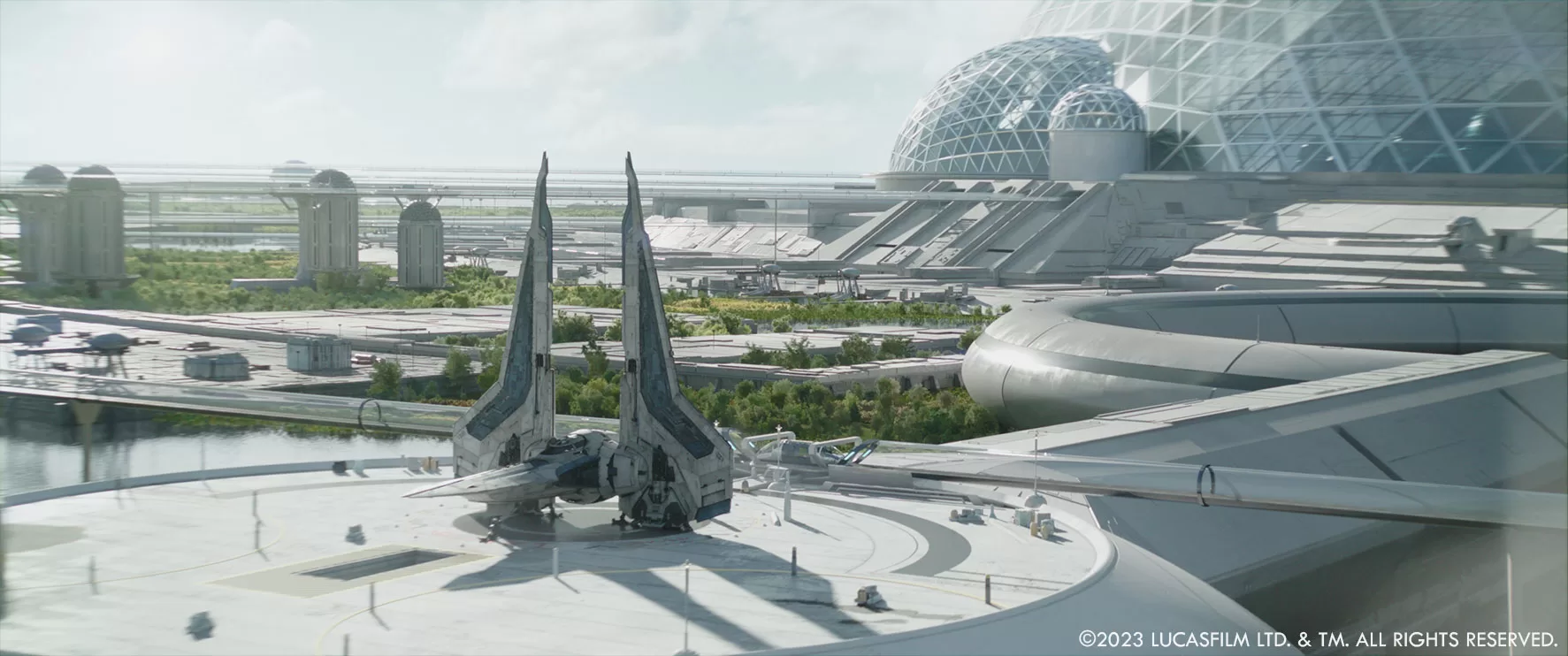
Coruscant was also a complicated one. The planet, with its mega city, has a pretty rich history, and the team at ILM really wanted to honor that history. Especially since we revisit the Coruscant of Order 66. So ILM restored over a hundred buildings and ships, dating all the way back to Attack of the Clones. Then they started the process of uprezzing and upgrading them, as well as creating all new buildings, with very high levels of detail. We really wanted to capture the density of the city, with buildings stretching all the way to the horizon.
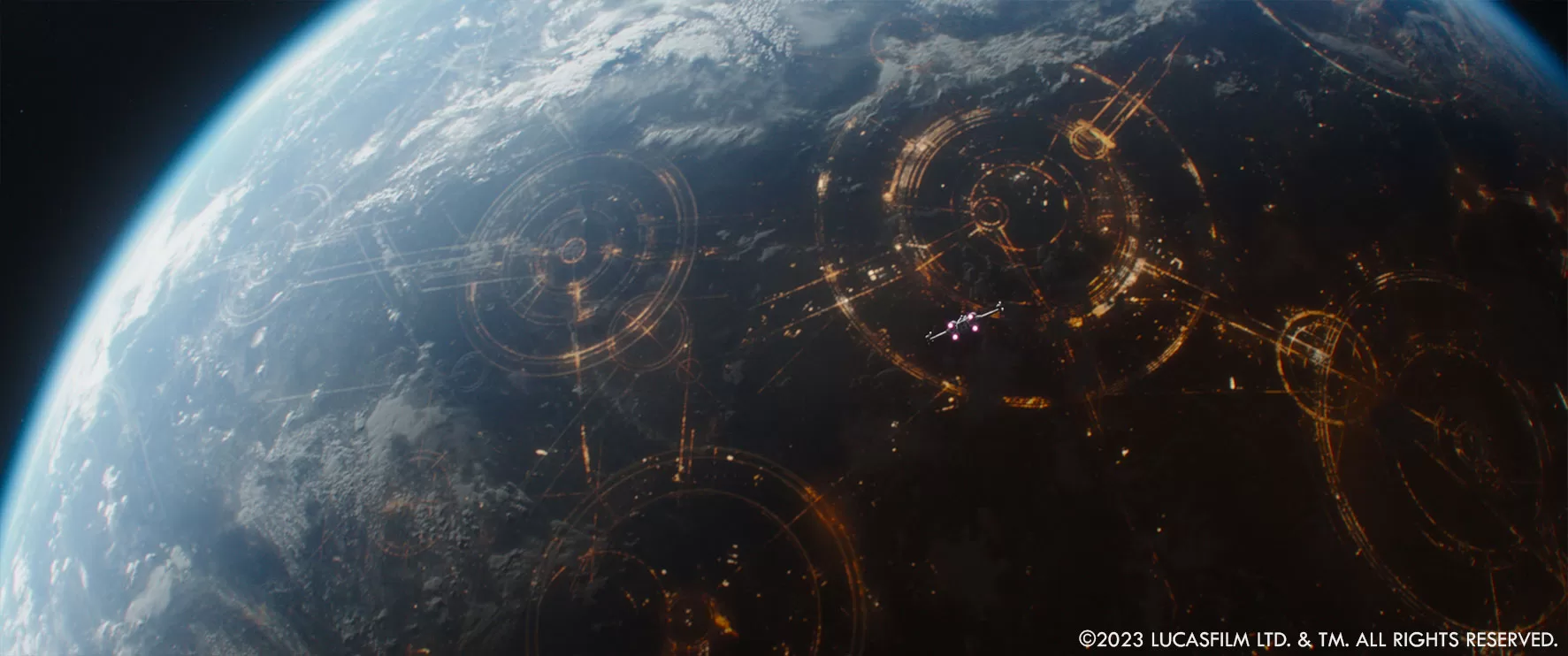
We discover many creatures during the season. Can you tell us more about them?
We introduced nineteen new creatures this season. On the smaller side, a trio of Anzellan droidsmiths were crafted specifically for the show. Each puppet was about half the size of Grogu and required watch-like mechanics for the articulation of the eyes, mouth and facial features.
There were also a couple of mech creatures that were built practically by the team at Legacy Effects. IG-12 was a modification that allowed Grogu to pilot his favorite droid. A full-body Bunraku puppet was attached to the body and legs of the puppeteer, giving the puppet mobility that is locked to the stride and gait of the operator. A Mech Spider, inspired by the work of Phil Tippett, made an appearance in Episode Two. Legacy’s practical version could be operated pneumatically, and a CG version was devised for shots that needed broader animation.
There is a great Star Wars tradition of massive creatures making surprise appearances. This season of The Mandalorian had its fair share: the turtle-like Lake Monster, the Giant Eagle, the Mythosaur, and the Trinitaur. Each creature had to be modeled and painted with a high level of detail.
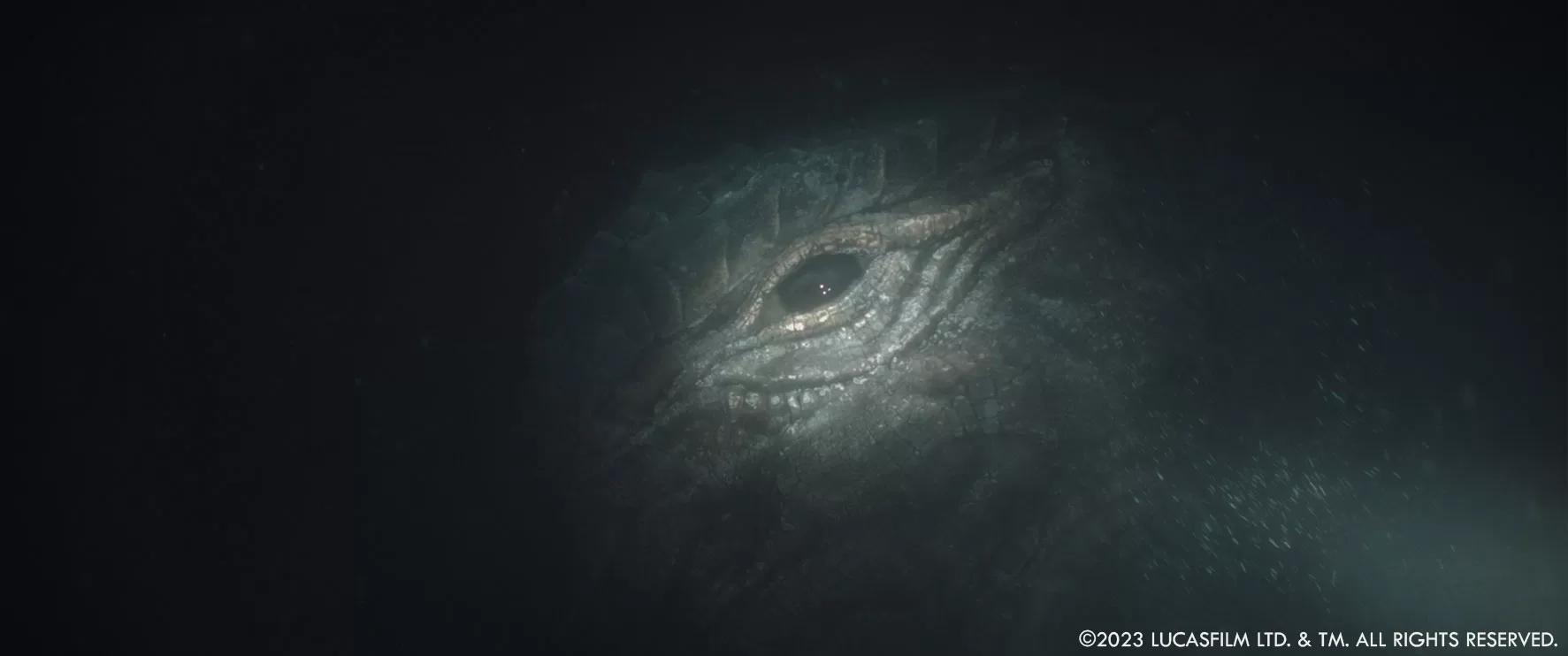
Some of the creatures are really big. How does that affect your animation work?
Our talented animation supervisors, Paul Kavanagh and Hal Hickel, are the experts, but one consideration of having massive creatures is how they affect their environment when they move. The Lake Monster’s motion generated a complex interplay of water and sand. All of that had to be simulated realistically. One of my favorite shots shows the turtle digging its claw into the sand and scraping the sand back. The simmed water then rushed into the cavity.
The Trinitaur was so huge that its camouflage is pretending to be distant mountains. When it emerged from the planet’s surface, it created earthquake-level destruction. As it attacked the Langskib, we simulated glass trinitite breaking off of it, and raining down.
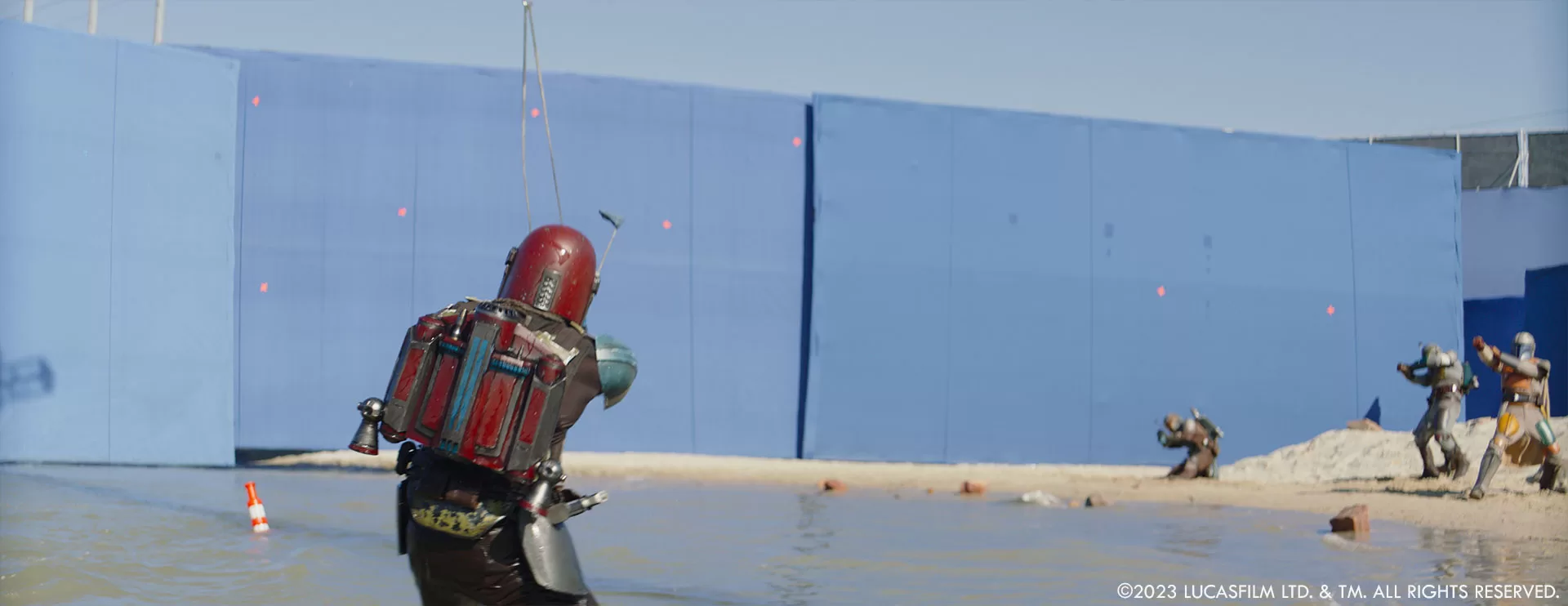
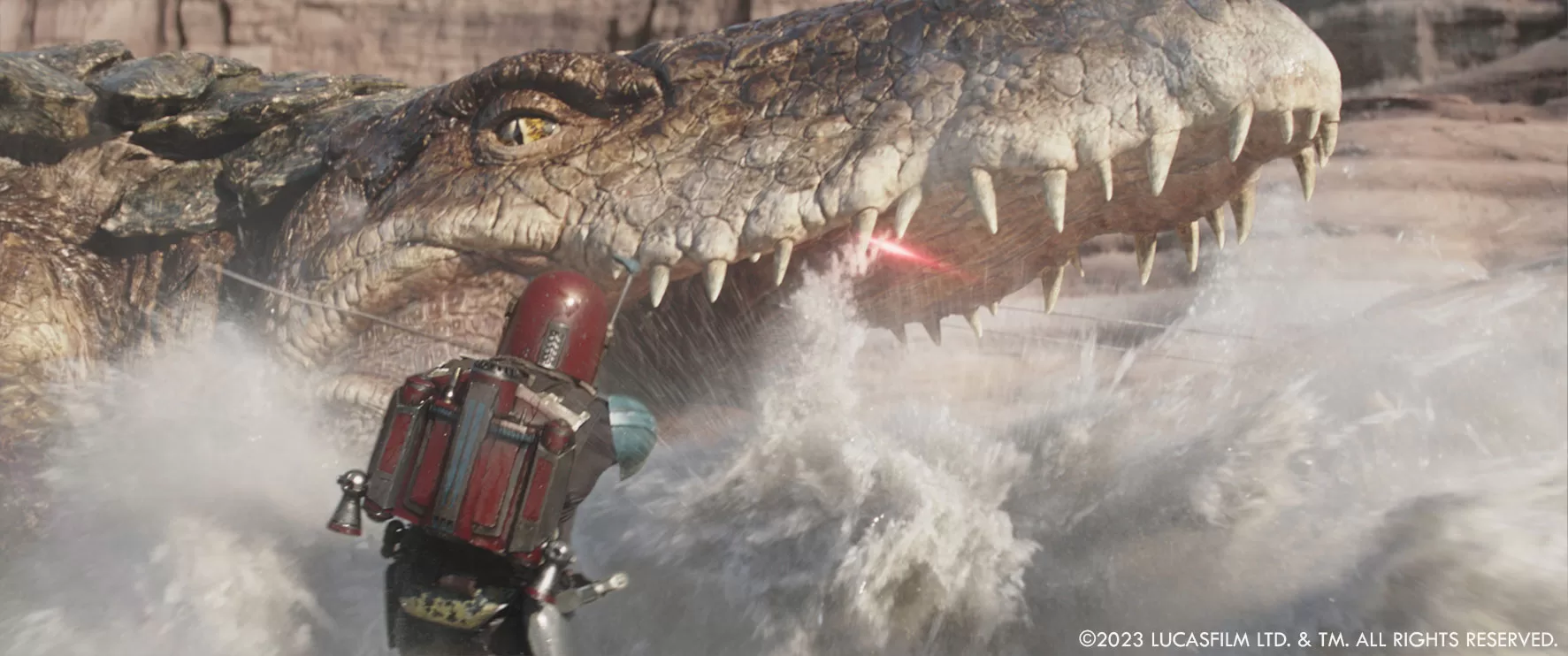
Tricky question, which creature is your favorite?
There are many fun creatures to choose from, but I think my favorite was the Lasat character, Zeb. My daughter is a huge Star Wars Rebels fan, and loves Zeb, so I really wanted to get him right.
It all started with Doug Chang’s group. They created a beautiful art concept, re-imagining the character for the real world. Then the company ILP created a 3D sculpture of the creature. After a few design rounds with Dave Filoni, Jon and Doug, we felt like we had successfully captured the spirit of Zeb.
During the look-development stage, we paid careful attention to subtle details, like the markings on his face, the quality of his hair groom, the tufting along the arms, and the way the light scattered through his ears.
For those fans of Zeb from the animated series, they’ll notice that Zeb is a bit older now, a bit slower. So when we shot the plates, we had a stunt double, Ocs, stand in for Zeb. He gave the character a nice physicality. And then we recorded Steve Blum, the voice actor, and used Steve’s face performance as a guide for how to animate Zeb. In the end I felt like it came across as a nice, understated cameo.
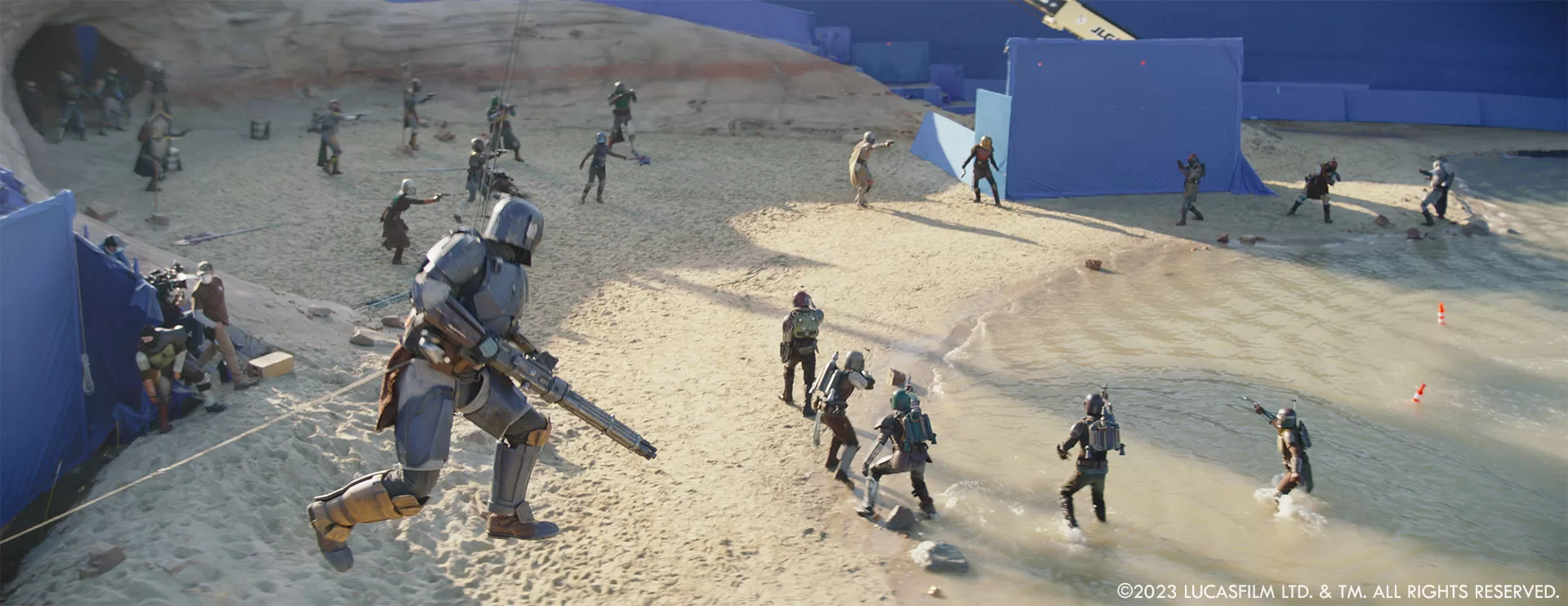
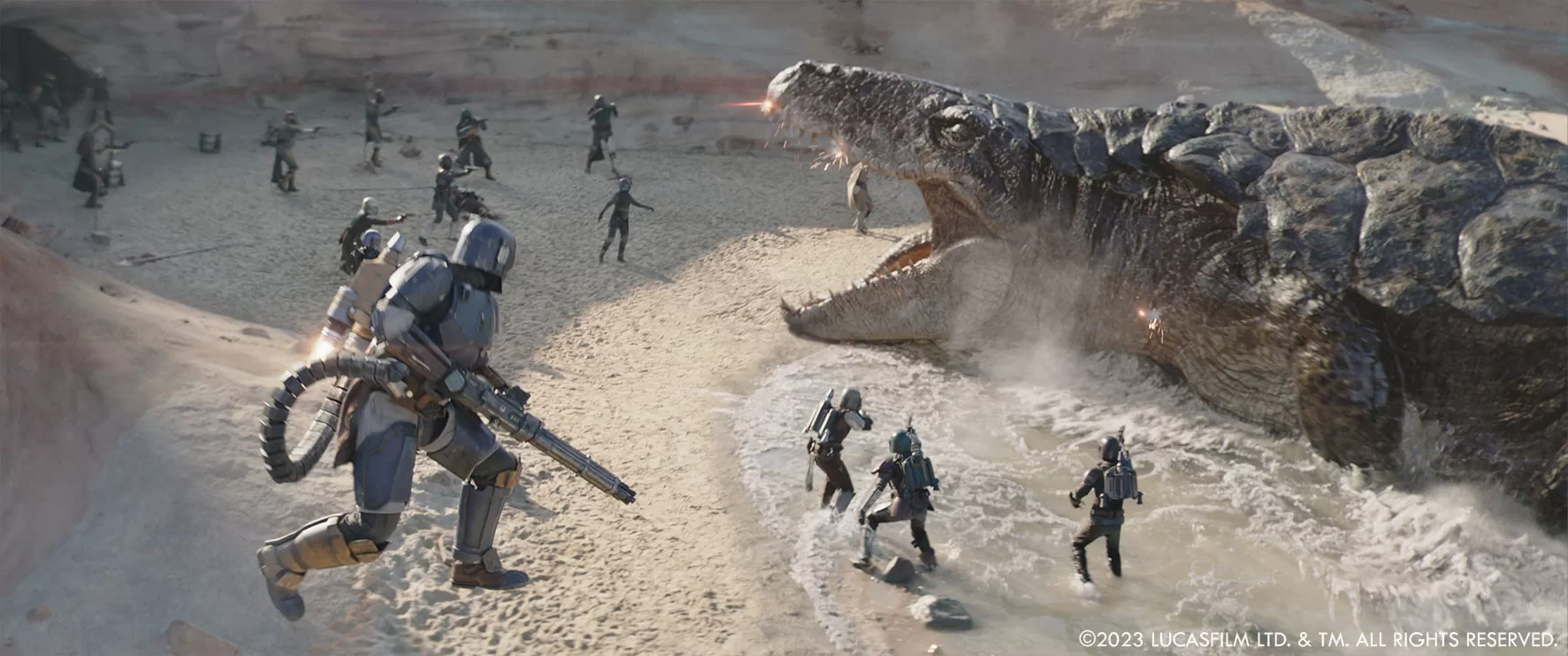
What’s the VFX shots count?
All in this season, we had about 5000 shots.
A big thanks for your time.
WANT TO KNOW MORE?
ILM: Dedicated page about The Mandalorian – Season 3 on ILM website.
Hybride: Dedicated page about The Mandalorian – Season 3 on Hybride website.
Image Engine: Dedicated page about The Mandalorian – Season 3 on Image Engine website.
© Vincent Frei – The Art of VFX – 2023





